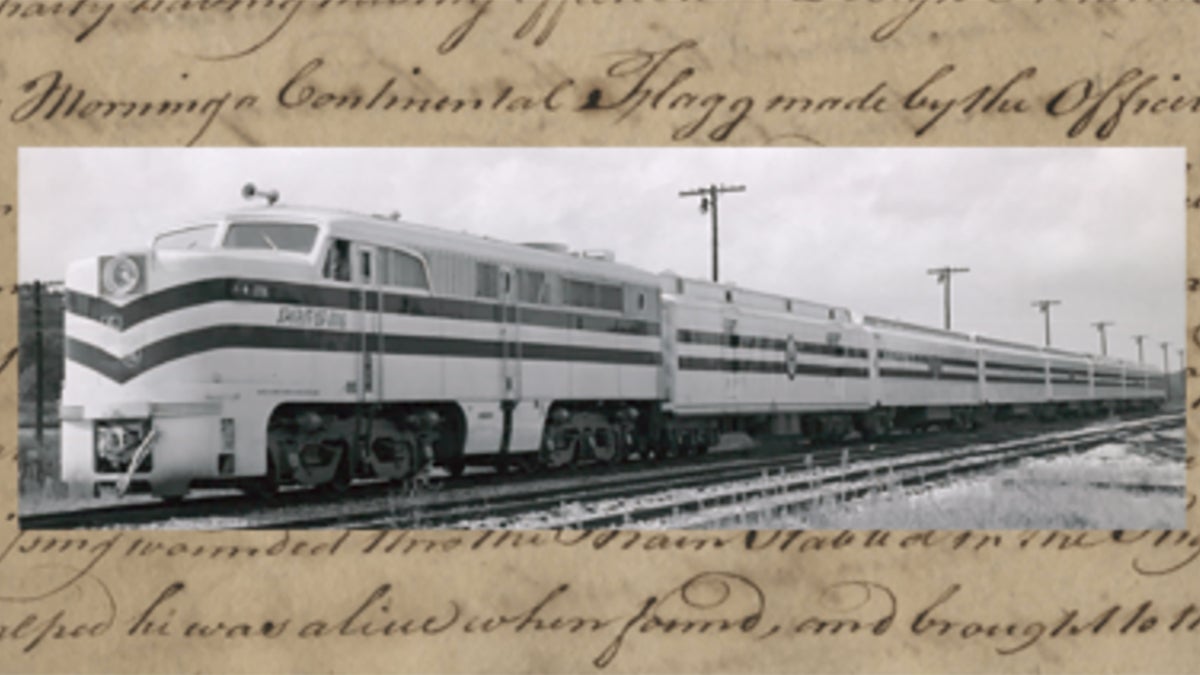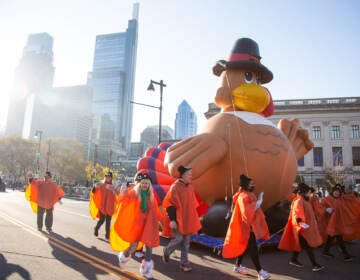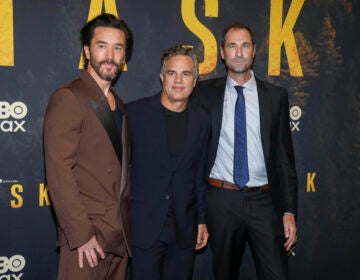Rosenbach’s Freedom Train is an exhibit about an exhibit
 www.rosenbach.org) " title="screen-shot-2016-07-01-at-3-55-39-pm" width="1" height="1"/>
www.rosenbach.org) " title="screen-shot-2016-07-01-at-3-55-39-pm" width="1" height="1"/>
The Freedom Train(photo via www.rosenbach.org)
In 1947, the Freedom Train began its year-and-a-half-long journey across the United States to instill a greater sense of American heritage on its many stops along the way. Among the historic documents it carried were original copies of the Declaration of Independence, the Constitution, and the Bill of Rights.
Philadelphia’s Rosenbach Musuem and Library opened an exhibition Friday that looks back at the original Freedom Train, and asks: How is history put together?
When the Freedom Train came to Philadelphia in 1947, Judith Reichard was 7 years old. Her family drove for hours to get there, and the visit left an impression. When Judith’s mother told her she could buy a souvenir, she picked a scarf with a print of the Declaration of Independence.
“I chose that particular one because I thought it was important,” she said.
Decades later, that scarf ended up on eBay, where it caught the attention of Rosenbach curator Kathy Haas. The exhibit that Haas put together is less about what was in the Freedom Train than about how the train was planned and advertised. That means archival documents and letters, but also items such as Judith’s scarf and a Freedom Train comic book that features Captain Marvel. In the comic, the villainous Dr. Sivana tries to prevent the signing of the Declaration of Independence. Captain Marvel, of course, foils his plan.
Other materials are less cheerful, like an early manuscript of a Langston Hughes poem wondering whether the Freedom Train would be segregated when it visited the South.
“I hope there’s no Jim Crow on the Freedom Train, no back-door entrance to the Freedom Train,” the poem reads.
The train ended up skipping those cities that insisted on segregation.
To promote the exhibit, the original Freedom Train’s organizers sent promotional radio scripts to the cities on the train’s route. Haas was asked to read one of these scripts, but with a twist: She had to adapt it to the modern-day Rosenbach exhibit.
Here is her reading:
Judith Reichard, the scarf’s original owner, said she plans to visit the exhibition. She has until Nov. 1 to do so.
WHYY is your source for fact-based, in-depth journalism and information. As a nonprofit organization, we rely on financial support from readers like you. Please give today.




